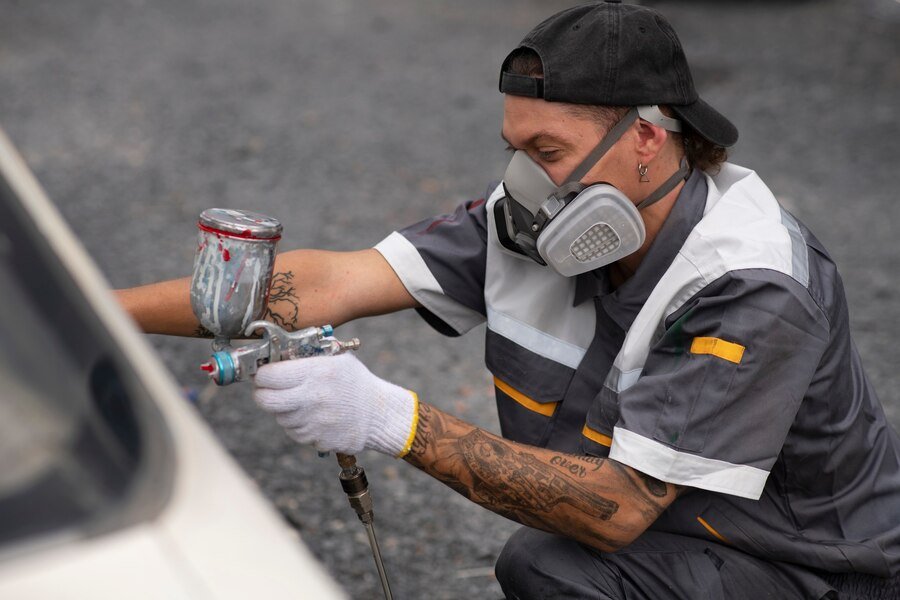VT1000 pitting refers to the surface degradation that occurs on the components of VT1000 equipment due to corrosion or wear. The VT1000 could refer to a specific model or type of industrial equipment, like a valve, motor, or other mechanical components that operate in demanding conditions. Pitting is a localized form of corrosion that results in small, often deep cavities or holes on the metal surface, compromising the integrity and performance of the equipment over time. Addressing pitting is crucial for maintaining the efficiency and longevity of machinery like the VT1000.
Causes of Pitting in VT1000 Equipment
Several factors can lead to pitting on VT1000 machinery, particularly those involving corrosive environments or heavy wear and tear. Here are some common causes:
- Corrosive Environments: If VT1000 equipment operates in a chemical plant, offshore environment, or any area with exposure to saltwater or acidic substances, the likelihood of pitting increases. Chlorides, for example, are notorious for initiating pitting on stainless steel surfaces.
- High-Stress Areas: Parts of the VT1000 that are subjected to high mechanical stress can become vulnerable to pitting. Repeated pressure or friction on a specific area can weaken the metal, making it more susceptible to corrosion.
- Poor Maintenance Practices: Inadequate cleaning, infrequent inspections, and failure to address early signs of corrosion can exacerbate pitting. Dirt, moisture, and chemicals can accumulate in crevices, accelerating the onset of pitting corrosion.
- Electrochemical Reactions: In some cases, pitting can be driven by electrochemical reactions, especially when the VT1000 is part of an assembly involving different metals. This can create a galvanic reaction where one metal corrodes faster than the other, leading to pitting.
How Pitting Affects the Performance of VT1000
Pitting corrosion, while seemingly minor at first, can have significant implications for the performance and safety of VT1000 equipment. The impact of pitting includes:
- Reduced Structural Integrity: Pitting creates small, deep holes on the metal surface, which can compromise the strength of the material. Over time, these pits can merge, leading to larger surface defects and weakening the overall structure of the equipment.
- Increased Wear and Tear: As pitting progresses, the roughened surface can cause increased friction between moving parts. This accelerates wear, leading to more frequent breakdowns and reducing the lifespan of the VT1000.
- Efficiency Losses: For machinery like the VT1000 that relies on precise movements or fluid dynamics, pitting can disrupt smooth operation. Pits can affect the flow of fluids or gases, leading to inefficiencies and potential malfunctions in the system.
- Safety Concerns: Deep pitting can pose serious safety risks, especially if the VT1000 is used in high-pressure environments. If left unchecked, pits can develop into cracks, which may result in leaks or catastrophic failures under pressure.
Identifying Pitting on VT1000 Equipment
Early detection of pitting is critical to preventing more severe damage to the VT1000. Here are common methods for identifying pitting:
- Visual Inspections: Regular visual inspections are the first line of defense against pitting. Look for small, localized depressions or pinholes on metal surfaces, especially in areas exposed to moisture or chemicals.
- Ultrasonic Testing: Ultrasonic testing can detect changes in the thickness of the metal that are indicative of pitting. This method is especially useful for identifying hidden pits beneath the surface that may not be visible to the naked eye.
- Dye Penetrant Testing: Applying a dye penetrant can help reveal surface cracks and pits on the VT1000. The dye seeps into the pits, making them more visible under ultraviolet light.
- X-Ray and CT Scanning: For a more detailed analysis, X-ray or CT scanning can provide a comprehensive view of the internal structure of VT1000 components, revealing pitting that might not be detectable with other methods.
Preventing Pitting in VT1000 Equipment
Preventing pitting corrosion involves a combination of material selection, protective coatings, and regular maintenance. Here are some effective strategies:
- Use of Corrosion-Resistant Materials: Selecting metals like stainless steel or alloys with high resistance to corrosion can reduce the risk of pitting. For VT1000 components exposed to chlorides or seawater, using materials like duplex stainless steel can offer better protection.
- Protective Coatings: Applying coatings such as epoxy, polyurethane, or special anti-corrosion paints can provide a protective barrier against corrosive elements. This is particularly important for parts of the VT1000 that come into contact with aggressive chemicals or moisture.
- Regular Maintenance: Implementing a routine maintenance schedule is key to catching early signs of pitting. Cleaning off debris, ensuring proper lubrication, and addressing any signs of surface damage can prevent pits from forming and spreading.
- Cathodic Protection: For some applications, cathodic protection methods can be used to prevent electrochemical reactions that lead to pitting. This involves using a sacrificial anode that corrodes instead of the VT1000 component, thereby protecting the primary equipment.
Repairing Pitting on VT1000 Equipment
Once pitting has occurred on VT1000 components, it’s crucial to address the issue promptly to prevent further damage. Here are some common methods for repairing pitted surfaces:
- Grinding and Polishing: For shallow pits, grinding and polishing the surface can remove the corroded area and restore a smooth finish. This method is effective when the pits have not yet compromised the structural integrity of the component.
- Welding and Filling: For deeper pits, welding can be used to fill the damaged areas. After welding, the surface is ground and polished to achieve a smooth finish. This method restores the strength of the metal, making it suitable for areas that need to withstand high pressure.
- Application of Repair Epoxy: In less critical areas, applying a repair epoxy can fill pits and create a smooth surface. The epoxy acts as a barrier to prevent further corrosion while restoring the functionality of the VT1000 part.
Long-Term Management of VT1000 Pitting

To ensure the longevity of VT1000 equipment, long-term management practices should be implemented. These include:
- Routine Inspections: Set up a schedule for inspecting VT1000 components for any signs of pitting or other types of corrosion. This helps in detecting issues before they become critical.
- Environmental Control: If possible, control the operating environment to minimize exposure to corrosive agents. For example, using dehumidifiers in storage areas or installing corrosion inhibitors in fluid systems can reduce the chances of pitting.
- Training Personnel: Properly training staff on the signs of corrosion and the importance of regular maintenance can help in catching pitting early. Knowledgeable personnel can make a significant difference in maintaining the integrity of the VT1000 equipment.
Conclusion
Pitting on VT1000 equipment is a serious issue that can compromise the efficiency, safety, and lifespan of the machinery. Understanding the causes and effects of pitting, along with implementing preventive measures and timely repairs, is essential for maintaining optimal performance. Through regular maintenance, use of corrosion-resistant materials, and proactive inspections, it’s possible to extend the life of VT1000 equipment and ensure it continues to operate effectively in demanding environments.











